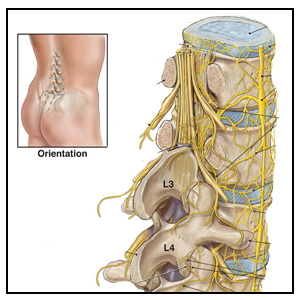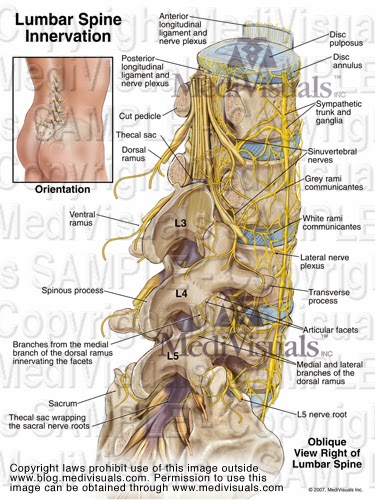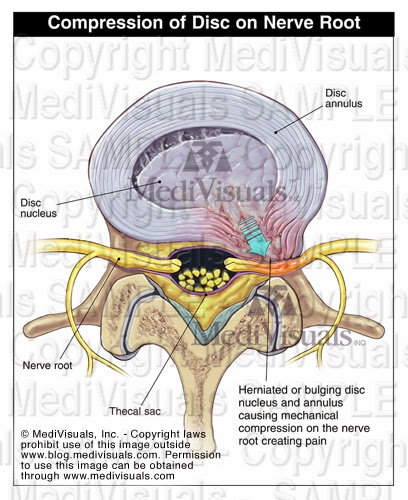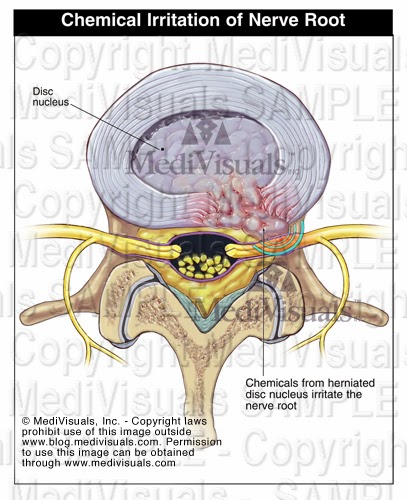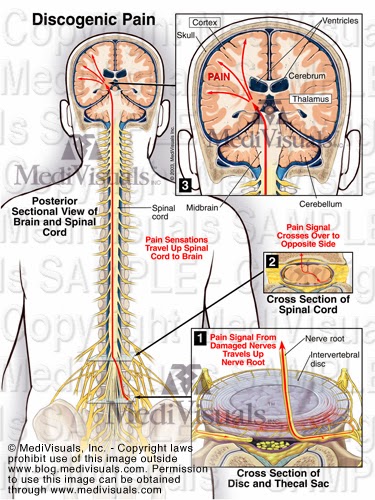By: Robert Shepherd MS, Certified Medical Illustrator, President & CEO, MediVisuals Inc.®
Defense counsel, in personal injury cases involving spinal disc injuries, place a great deal of importance on the large neural structures, such as the nerve roots and spinal cord, but often times fail to appreciate the significance of the many smaller nerves around the spine. As the illustration below demonstrates, the spinal canal and discs are covered with a meshwork of nerves. In some people, these nerves can be far more sensitive than they are in others.
Direct compression of an exiting nerve root (see illustration below) is widely appreciated to cause local, as well as, radicular pain and weakness.
Another explanation for pain and weakness without direct compression is attributable to chemical irritation of the nerve root due to the breakdown of the nearby disc. This occurs because, as the disc breaks down, chemicals and inflammation irritate the nearby nerve root causing pain and weakness, just as if the nerve root were compressed. (see illustration below)
. . . and are carried to the brain and interpreted in the same way.

